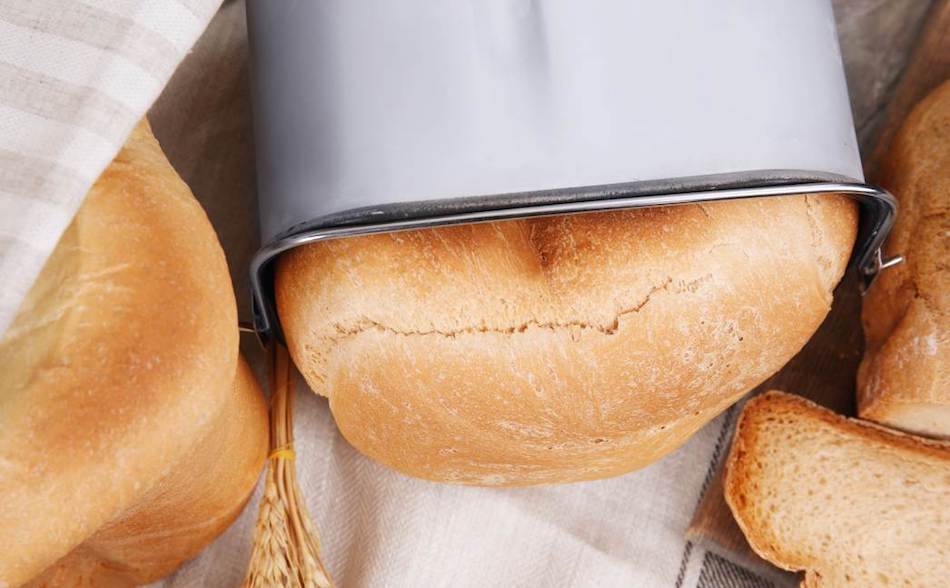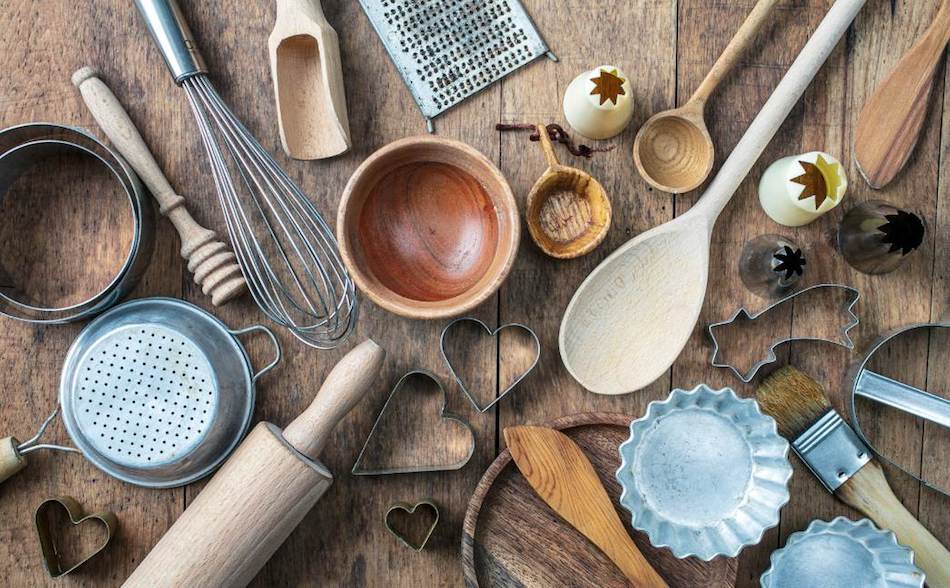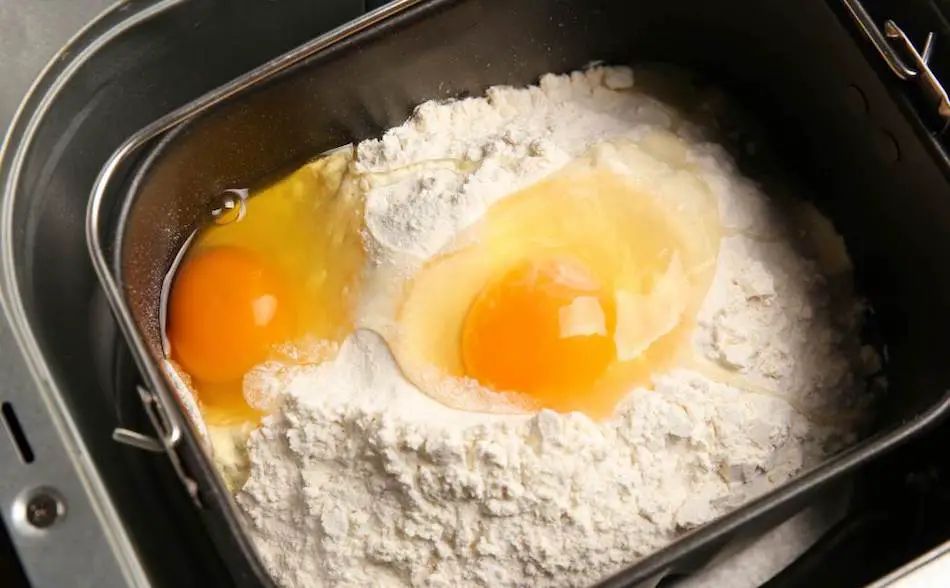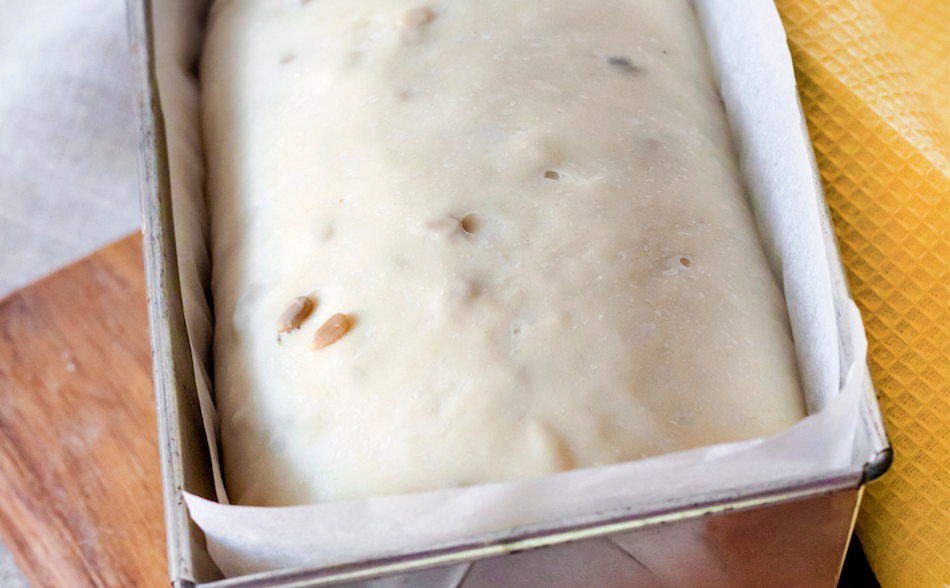
Bread is one of life’s simple pleasures, and there’s nothing like the aroma of freshly baked bread filling your home. But what happens when your trusty bread machine produces dry, dense loaves? It’s a common problem, but it’s easily avoidable! In this article, we’ll explore the reasons why bread machine bread can turn out dry, and provide tips and tricks for preventing this from happening.
Bread turns out dry in bread machines when the balance between dry and wet ingredients is off. If there is too much flour or other dry ingredients in the recipe, or too little liquid, the bread will be dry and dense. Improper mixing can also lead to dry bread, as uneven distribution of ingredients can result in a poorly hydrated dough. Accurate measurement of ingredients and proper mixing are key to preventing dry bread from a bread machine. Additionally, overbaking can also contribute to dryness, so it’s important to monitor the bread as it bakes and to avoid overcooking it.
| Reason for Dry Bread | Solution |
|---|---|
| Overmeasuring dry ingredients (flour, sugar, salt, etc.) | Accurately measure the ingredients using a kitchen scale or measuring cups and spoons. |
| Undermeasuring wet ingredients (water, milk, eggs, etc.) | Make sure to add enough liquid to hydrate the dough properly. |
| Improper mixing | Ensure that the dough is well-kneaded and the ingredients are evenly distributed. |
| Overbaking | Monitor the bread as it bakes and remove it from the machine when it is fully baked. |
Explanation of Bread Machine Bread Dryness
Dry bread from a bread machine is a common problem, but it’s easy one to solve. Bread becomes dry when the balance of ingredients is off. If there’s too much flour or other dry ingredients in the mix, or not enough liquid, then you’ve got yourself a dry, dense loaf.
And let me tell you, there’s nothing worse than dry bread. It’s a waste of time, effort, and ingredients.
By measuring your ingredients accurately, properly mixing the dough, and monitoring the bread as it bakes, you’ll be well on your way to producing perfectly baked bread machine loaves every time.
3 Common Causes of Dry Bread from Bread Machine
First, let’s talk about the root of the problem: why bread from a bread machine can turn out dry. There are three main culprits.
Firstly, overmeasuring the dry ingredients, such as flour, sugar, and salt.
Secondly, undermeasuring the wet ingredients, like water, milk, and eggs.
And lastly, improper mixing. If the ingredients are not mixed together properly, the dough won’t hydrate evenly, and you’ll be left with a dry, dense loaf. It’s that simple.
1. Overmeasuring Dry Ingredients
Overmeasuring the dry ingredients is a common mistake, but it’s an easy one to avoid. If there’s too much flour, sugar, salt, or other dry ingredients in the mix, then the bread will turn out dry. It’s simple mathematics, really.
The excess of dry ingredients will absorb all the moisture in the dough, leaving you with a dense, dry loaf. And, let me tell you, there’s nothing worse than dry bread.
So, to avoid this pitfall, it’s crucial that you measure your ingredients accurately. Invest in a kitchen scale, and weigh out the ingredients to ensure that you have the correct ratios.
Or, if you prefer to use measuring cups and spoons, make sure you’re using the correct level scoop method, so that you don’t over- or under-measure.

2. Undermeasuring Wet Ingredients
Undermeasuring the wet ingredients is another common mistake that can lead to dry bread from a bread machine.
If there’s not enough water, milk, eggs, or other liquid in the dough, then it won’t hydrate properly, and you’ll be left with a dense, dry loaf. It’s simple science, really.
The liquid is essential for hydrating the flour and other ingredients, creating a soft and pliable dough that will rise and bake into a perfectly moist loaf.
So, to prevent this from happening, make sure you measure your wet ingredients accurately, and add enough of them to the dough to create a well-hydrated mixture.
Water, Milk and Eggs
Water: Water is the most fundamental of all the wet ingredients in bread dough, and it’s crucial for creating a well-hydrated mixture.
If there’s not enough water in the dough, it will be dry and dense. So, make sure you add the right amount of water, and measure it accurately.
Milk: Milk is another important wet ingredient in bread dough, and it can add richness, flavor, and moisture to your bread.
Whether you’re using whole milk, skim milk, or any other type of milk, make sure you measure it accurately and add enough of it to the dough to create a well-hydrated mixture.
And, for a truly decadent loaf, try using flavored milks, such as almond or coconut milk for something different.
Eggs: Eggs are an excellent source of moisture, richness, and flavor in bread dough, and they can help create a perfectly moist loaf.
If you’re using whole eggs, egg whites, or yolks, just make sure you add enough of them to the dough to create a well-hydrated mixture.

3. Improper Mixing
Improper mixing is another common cause of dry bread from a bread machine, and it’s a simple mistake that can be easily avoided.
If the dough is not mixed thoroughly and evenly, then the ingredients will not be properly combined, and the dough will be dense and dry.
So, make sure you mix the dough thoroughly and evenly, either by hand, with a stand mixer, or with a dough hook attachment on a hand mixer.
And, if you’re using a bread machine, make sure to follow the manufacturer’s instructions for mixing and kneading the dough, so that you achieve a well-mixed, homogeneous mixture that will bake into a perfectly moist loaf.
Tips for Preventing Dry Bread from Bread Machine
Measuring Ingredients Accurately: Accurate measurement of ingredients is key to avoiding dry bread from a bread machine. Whether you’re measuring flour, sugar, yeast, or any other ingredient, make sure you use a measuring cup or scale to get the right amount, and avoid guessing or estimating. A little too much of one ingredient, or a little too little of another, can have a big impact on the final result.
Properly Mixing Ingredients: Proper mixing of ingredients is crucial for creating a well-hydrated dough that will bake into a moist loaf. Whether you’re using a stand mixer, a hand mixer, or your own two hands, make sure you mix the ingredients thoroughly and evenly, so that the dough is homogeneous and well-combined.”
Monitoring Dough Consistency: Monitoring the consistency of the dough is important for avoiding dry bread from a bread machine. Whether you’re using a bread machine or baking bread by hand, make sure you check the dough periodically, and add more liquid or flour as needed, to create a soft and pliable mixture that will rise and bake into a perfectly moist loaf.
Troubleshooting Dry Bread from Bread Machine
Assessing the Dough Consistency: Assessing the consistency of the dough is an important step in troubleshooting dry bread from a bread machine.
If the dough is dense and dry, then you may need to add more liquid, such as water or milk, to create a soft and pliable mixture that will rise and bake into a moist loaf.
Making Adjustments to Ingredients: Making adjustments to ingredients is another important step in troubleshooting dry bread from a bread machine.
If the dough is dense and dry, then you may need to add more liquid, such as water or milk, to create a soft and pliable mixture that will rise and bake into a moist loaf.
Or, if the dough is too sticky, then you may need to add more flour, to create a manageable dough that will rise and bake into a perfectly textured loaf.
Avoiding Overbaking: Avoiding overbaking is key to preventing dry bread from a bread machine. If you bake the bread for too long, then the moisture will evaporate, and the loaf will become dry and dense.
So, make sure you keep an eye on the bread as it bakes, and check it periodically, to avoid overbaking.
Proper Storage of Ingredients
Proper storage of ingredients can play a significant role in preventing dry bread from a bread machine. Storing ingredients in a cool, dry place helps to ensure that they remain fresh and at the right consistency for use in baking.
For dry ingredients, such as flour and sugar, it is important to store them in airtight containers, away from direct sunlight and moisture, which can cause them to spoil or become clumpy. This can impact the accuracy of measurements, leading to dry bread from a bread machine.
For perishable ingredients, such as yeast, it is important to store them in the refrigerator, to extend their shelf life. Yeast is a living organism that is activated by moisture and warm temperatures, so keeping it in a cool, dry place will help prevent it from going bad and impacting the quality of the bread.
Additionally, if using active dry yeast, it is important to properly proof the yeast before using it in baking, to ensure that it is still active and able to rise the dough. If the yeast is no longer active, the dough will not rise properly, leading to dry bread from a bread machine.
Adding in Fats and Liquids
Adding fats and liquids to the dough can help create a moister loaf of bread from a bread machine. Fats, such as butter or oil, can help to keep the bread moist by slowing down the evaporation of moisture during the baking process. Similarly, liquids, such as honey or molasses, can add moisture to the dough, making it more pliable and preventing it from becoming dry.
To properly incorporate these ingredients into the dough, it is important to add them in the right proportions and at the right time. Generally, fats and liquids are added to the dough early on in the mixing process, before the flour is added. This helps to evenly distribute the ingredients throughout the dough.
It is also important to measure these ingredients accurately, as too much or too little of either can impact the final result. For example, adding too much fat can make the bread greasy, while adding too little liquid can result in dry bread from a bread machine.
It may also be helpful to experiment with different amounts of fats and liquids to find the right balance for your particular bread machine and ingredients. Over time, you may find that you prefer a slightly sweeter or moister loaf, and can adjust the amount of liquids and fats accordingly.
Choosing the Right Bread Machine Settings
Choosing the right bread machine settings can have a significant impact on the final result, particularly when it comes to avoiding dry bread. Most bread machines have several settings to choose from, including dough, bread, and rapid bake, each with its own unique characteristics and benefits.
The dough setting is typically used to mix and knead the dough, but not bake it. This is ideal for those who prefer to shape and bake the bread in the oven, or for those who want to make specialty breads, such as braided loaves or shaped rolls.
The bread setting is used for a full cycle of mixing, kneading, rising, and baking the bread. This is the most common setting for most bread machine users, and can produce a variety of breads, from basic white bread to whole wheat and specialty breads.
The rapid bake setting is designed for a faster cycle of mixing, kneading, and baking, typically taking about half the time of a regular bread cycle. This setting is ideal for those in a hurry, but it can result in a drier loaf of bread, as the baking cycle is shorter and may not allow enough time for the dough to rise properly.
When selecting a setting, it is important to consider the type of bread you are making and the desired result. For example, if you are making a denser, heavier bread, such as whole wheat, you may want to select the dough setting, as this will allow the dough to rise longer, resulting in a lighter and more moist loaf. If you are making a lighter bread, such as white bread, you may prefer the rapid bake setting for a faster result.
Proofing the Dough
Proofing the dough, my friends, is one of the most critical steps in avoiding dry bread from a bread machine. Proofing is the process of allowing the yeast to ferment and the dough to rise, which results in a lighter and more flavorful loaf of bread.
But, let me tell you, proofing is an art form, and it must be done correctly. If the dough is underproofed, it will be dense and heavy. If the dough is overproofed, it will collapse, resulting in a dry and crumbly loaf.
So, how do you proof the dough properly? First, ensure that your yeast is fresh and active by dissolving it in warm water before adding it to the dough.
Second, provide a warm, moist environment for the dough to rise. This can be achieved by covering the dough with a damp cloth, or placing it in a covered bowl or proofing basket.
Finally, allow the dough to rise for the recommended time, typically about 45 minutes to 1 hour, or until it has doubled in size.
Timing is everything. Do not rush the proofing process, as this will result in an underproofed loaf, and do not let the dough overproof, as this will result in a dry and crumbly loaf.
Proofing the dough properly is key to achieving a moist, fluffy loaf of bread from your bread machine.

Baking in a Bread Pan
Baking bread in a bread pan is a completely different game than baking bread in a bread machine. And let me tell you, it can have a huge impact on the final result.
You see, a bread machine is designed to bake bread quickly and efficiently, using a combination of heat, steam, and kneading blades. This can result in a crust that is too hard and a crumb that is too dry.
On the other hand, baking bread in a bread pan allows you to control the environment, the heat, and the moisture. This can result in a crust that is perfectly crispy and a crumb that is beautifully moist.
But, let me tell you, it’s not as simple as just pouring the dough into a pan and sticking it in the oven. There are many factors to consider, such as the type of pan, the size of the loaf, and the baking temperature.
Bread Machine FAQs
- Q: Why is my bread machine bread turning out dry? A: There could be several reasons for this, such as overmeasuring dry ingredients, undermeasuring wet ingredients, improper mixing, improper storage of ingredients, baking for too long, and not proofing the dough properly.
- Q: How can I measure ingredients accurately? A: To ensure that your ingredients are measured accurately, it’s best to use a kitchen scale and measure by weight, rather than volume.
- Q: How can I avoid overbaking my bread machine bread? A: To avoid overbaking, it’s important to monitor the dough consistency throughout the baking process and make any necessary adjustments to ingredients or baking time. You can also invest in a bread machine with a timer or a crust color control setting to help regulate the baking process.
- Q: What are some tips for preventing dry bread from a bread machine? A: To prevent dry bread from a bread machine, it’s important to measure ingredients accurately, mix ingredients properly, monitor dough consistency, and store ingredients in a cool, dry place. Adding fats and liquids, such as butter, oil, honey, or molasses, can also help create a moister loaf.
- Q: What are the benefits of proofing the dough before baking? A: Proofing the dough before baking allows yeast to ferment and produce gas, which helps the dough to rise and creates a softer, more moist loaf.
- Q: Is baking bread in a bread machine always the best option? A: While a bread machine can be a convenient and efficient way to bake bread, it may not always result in the moistest loaf. Baking bread in a bread pan can help you control the environment and result in a more moist loaf. However, it requires a greater degree of skill and attention to detail.

